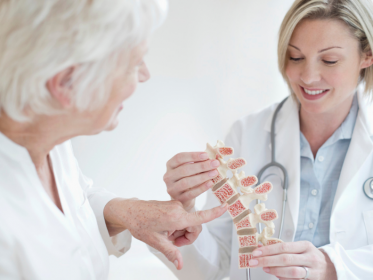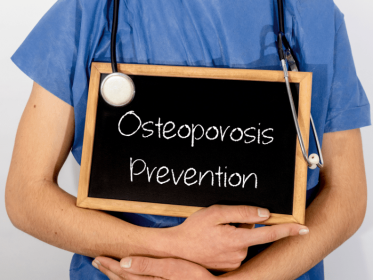- +1 888.407.0616
- info@mdchoicehospicecare.com
- Mon - Fri 9 AM - 5 PM

Bones, in reality, are constantly regenerating: old tissues are eliminated and replaced with new ones.
The body develops bones quicker than old tissues break down at a young age, resulting in increased bone mass. Bones begin to lose density and strength after 35 years because they are destroyed quicker than new ones are formed.
The risk of getting osteoporosis is influenced in part by the amount of one’s bone mass. To some degree, maximal bone mass is inherited, but it also depends on nationality. The higher your maximal bone mass, the more “stored” bone tissues you have and the less likely you are to develop osteoporosis as you become older.
Osteoporosis is characterized by a loss of bone strength as a result of an age-related decline in bone density and mineral content. People with osteoporosis experience a quicker, “earlier” drop-in bone concentration. As a result, the bones grow more delicate and are shattered more frequently.
Since the disease inevitably leads to disability in the later stages, early diagnosis of osteoporosis becomes crucial for maintaining the health of patients. At the moment, the safest and at the same time quite informative method of bone tissue examination is densitometry.
This procedure is based on measuring the speed of ultrasound or X-rays passing through bone tissue: for dense, healthy bones, it is higher than for thinned and destroyed ones. In just a few minutes, the doctor determines the patient’s condition and establishes the primary diagnosis. Modern equipment makes it possible to detect a loss of 3-5% density, while, even in the case of X-rays, the radiation dose is 400 times lower than when performing a conventional image.

In addition to densitometry, radiography can be used, but it allows you to notice adverse changes only in cases where the loss is at least 30% of the bone mass. In addition, X-rays are hardly harmless to health, and it is impossible to repeat this study often.
To support the diagnosis, doctors use laboratory tests:
If necessary, the doctor may prescribe other studies necessary to diagnose osteoporosis in a particular patient, taking into account his current condition, concomitant diseases, and other objective factors. Regarding the examination and treatment of osteoporosis, you should contact a therapist, who then directs the patient to consult a rheumatologist, endocrinologist, and other specialists, depending on the nature of the disease.
The success of osteoporosis treatment depends on how much the patient will comply with the doctor’s prescriptions, because, in addition to taking certain medications, lifestyle and eating style are of the utmost importance.
Therapy is primarily aimed at:
To do this, the patient must monitor his weight and build muscle tissue, as well as provide his body with the proper amount of calcium and vitamin D.
In general, clinical recommendations for osteoporosis depend on the stage of the disease, i.e. on the level of destruction of bone tissue. In addition, the doctor takes into account the age of the patient and the general state of his health.
For elderly patients with symptoms of spinal osteoporosis, treatment usually includes drug therapy consisting of antiresorptive and anabolic drugs. The former suppress the processes of bone resorption, the latter stimulates the formation of new bone tissue. Medicines must be combined with calcium-containing drugs. With severe pain, which is usually accompanied by compression fractures of the vertebrae, the doctor prescribes painkillers.
Patients with a hip fracture are prescribed a surgical operation aimed at restoring the joint’s operability. The intervention of a surgeon may also be necessary with a high degree of deformation of the chest due to compression injuries of the vertebrae.
The role of a proper diet in osteoporosis is extremely important. It should:
The effect of proper nutrition in osteoporosis is reinforced by gymnastics necessary for the formation of a muscular corset that supports bone tissue. With timely detection and subsequent compliance with the recommendations of specialists, the disease recedes, and the patient returns to a fully active life.
First of all, let’s touch upon the question of what prevention is. There are factors in the development of osteoporosis that cannot be eliminated-they are either associated with natural changes in the body (for example aging) or related to diseases whose treatment is difficult and takes a lot of time. However, there are also factors that we can influence. Their exclusion is part of a set of measures to prevent difficulties with the skeletal apparatus in women and men of all ages, helping to avoid bone fragility in old age.

Measures of prevention and treatment of the disease, fortunately, do not require large investments – anyone who cares about their health can adhere to them. It is important to remember that the key to competent and effective prevention lies in the comprehensive observance of measures: to adhere to the rules selectively means exposing yourself to additional danger.
To reduce the risk of osteoporosis you can follow these basic recommendations applied by WHO;
To sum up, all you need to do is to try to maintain a healthy lifestyle and regularly see a doctor. If you have any trouble with your health, don’t take any drugs without consulting a specialist. It can have the opposite effect and harm your organism.
Stay Healthy!